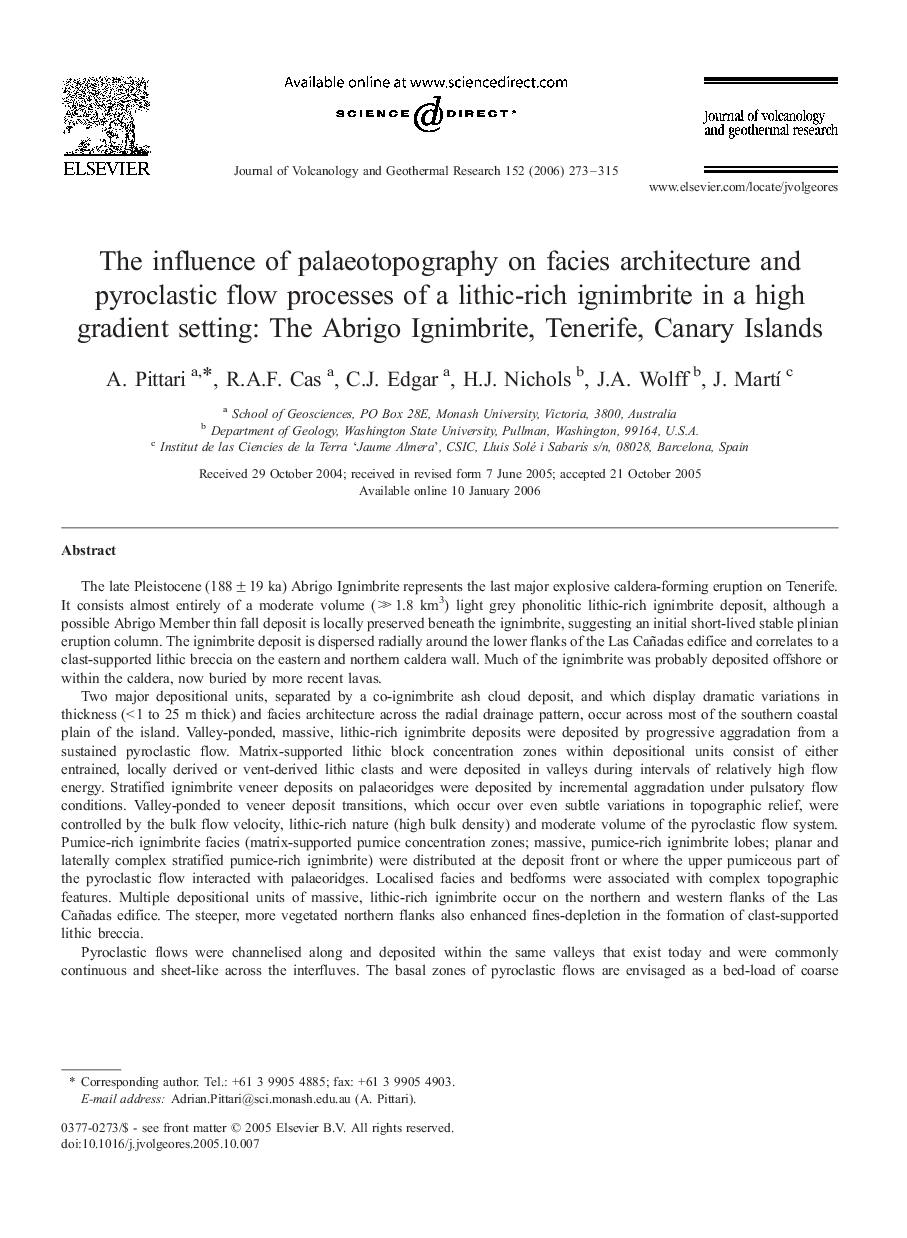| کد مقاله | کد نشریه | سال انتشار | مقاله انگلیسی | نسخه تمام متن |
|---|---|---|---|---|
| 4715116 | 1638481 | 2006 | 43 صفحه PDF | دانلود رایگان |

The late Pleistocene (188 ± 19 ka) Abrigo Ignimbrite represents the last major explosive caldera-forming eruption on Tenerife. It consists almost entirely of a moderate volume (≫ 1.8 km3) light grey phonolitic lithic-rich ignimbrite deposit, although a possible Abrigo Member thin fall deposit is locally preserved beneath the ignimbrite, suggesting an initial short-lived stable plinian eruption column. The ignimbrite deposit is dispersed radially around the lower flanks of the Las Cañadas edifice and correlates to a clast-supported lithic breccia on the eastern and northern caldera wall. Much of the ignimbrite was probably deposited offshore or within the caldera, now buried by more recent lavas.Two major depositional units, separated by a co-ignimbrite ash cloud deposit, and which display dramatic variations in thickness (< 1 to 25 m thick) and facies architecture across the radial drainage pattern, occur across most of the southern coastal plain of the island. Valley-ponded, massive, lithic-rich ignimbrite deposits were deposited by progressive aggradation from a sustained pyroclastic flow. Matrix-supported lithic block concentration zones within depositional units consist of either entrained, locally derived or vent-derived lithic clasts and were deposited in valleys during intervals of relatively high flow energy. Stratified ignimbrite veneer deposits on palaeoridges were deposited by incremental aggradation under pulsatory flow conditions. Valley-ponded to veneer deposit transitions, which occur over even subtle variations in topographic relief, were controlled by the bulk flow velocity, lithic-rich nature (high bulk density) and moderate volume of the pyroclastic flow system. Pumice-rich ignimbrite facies (matrix-supported pumice concentration zones; massive, pumice-rich ignimbrite lobes; planar and laterally complex stratified pumice-rich ignimbrite) were distributed at the deposit front or where the upper pumiceous part of the pyroclastic flow interacted with palaeoridges. Localised facies and bedforms were associated with complex topographic features. Multiple depositional units of massive, lithic-rich ignimbrite occur on the northern and western flanks of the Las Cañadas edifice. The steeper, more vegetated northern flanks also enhanced fines-depletion in the formation of clast-supported lithic breccia.Pyroclastic flows were channelised along and deposited within the same valleys that exist today and were commonly continuous and sheet-like across the interfluves. The basal zones of pyroclastic flows are envisaged as a bed-load of coarse lithic lapilli and blocks transported under their own momentum and with the support of the surrounding fine ash-gas granular flow.
Journal: Journal of Volcanology and Geothermal Research - Volume 152, Issues 3–4, 15 April 2006, Pages 273–315